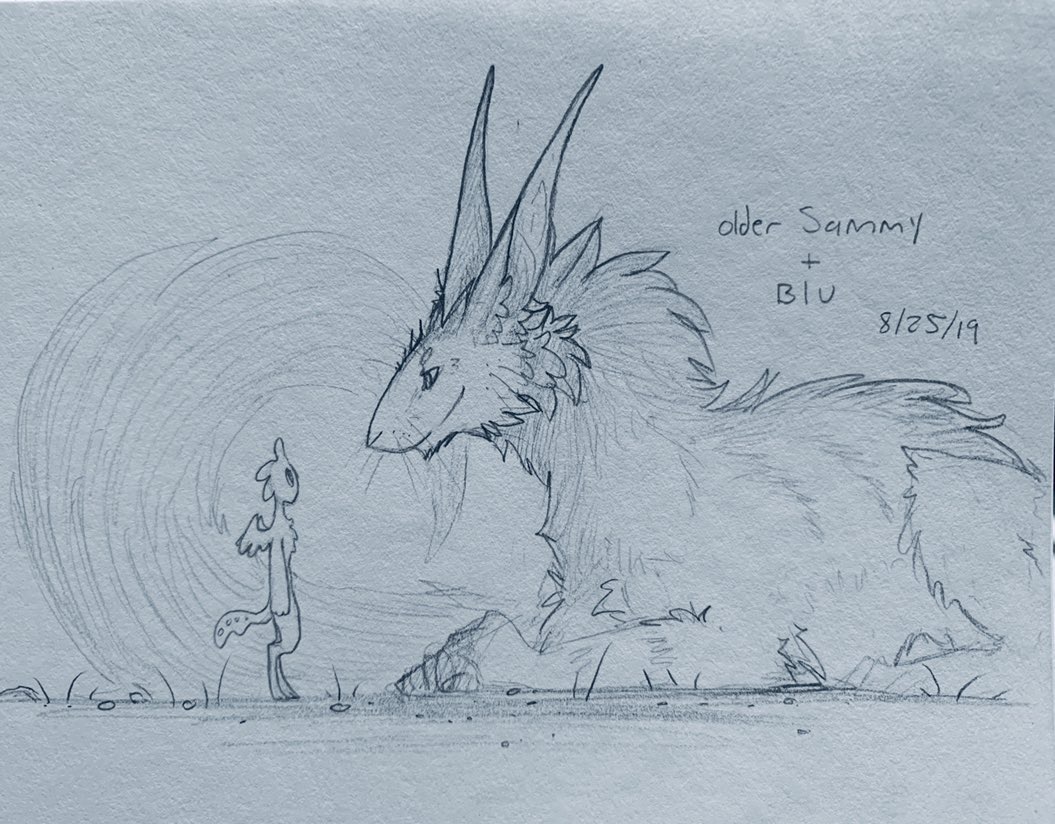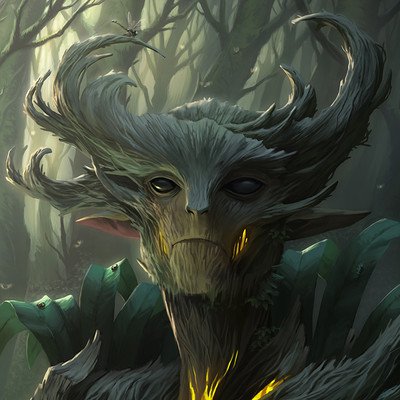Capable of moving back and forth between bipedal and quadrupedal movement, their long tails help to balance out their weight when moving upright or squatting. When stationary a quilan will often rest its weight on its back legs, almost as if siting on their ankles, this allows them a faster reaction time then sitting down all the way. Quilan's legs have evolved for speed, agility, and making long jumps, and their paws are wide and flat with extra fur to aid in stealth by damping sound.
Their slightly curved spine and long torso aids in their flexibility, allowing them a great range of motion and the ability to twist around 180 degrees. Elastic cushioning disks, and the way their muscles, tendons, and ligaments attach to their spine allow it to extend and twist to incredible degrees. The way their shoulders connect to the body also help, only being anchored by muscle, it allows them an extended reach. These factors combined with their relatively short collar bones, allows them greater access to small spaces and odd locations.
They also possess an enlarged inner ear, the volume much greater than other species their size, and longer canals. This gifts them with enhanced hearing, and also greater balance and awareness at high speeds, allowing them to operate at top efficiency and precision without having to slow down. Able to execute sharp turns and sudden movements with grace and agility, they pose a worthy opponent in feats of speed often being hailed as the masters of evasion.
The large surface area of the outer ear also helps enhance their hearing, the longer shape serving to capture sound better and help funnel it into the inner ear. Also helping to disperse body heat and cool them down by catching breezes.
Their coats consists of two different types of fur that grow in dense layers, the guard fur that grows long and straighter to ward off sunlight and water, and the ground fur that is short and wavy and interlocks to form pockets of air. These layers act as thermoregulation by trapping a thick layer of air against the body, this allows fresh air to flow against the skin and cool them down in the warmer months. Later on the air that has been trapped against the body throughout the day and been warmed keeps them insulated against the colder night air. While their fur is partially water resistant if the guard fur is exposed to too much water and it fails, the ground coat will rapidly become soaked and laden with water. For quilan with longer fur this can be a death sentence, their fur absorbing and holding so much water that their body temperature plummets, and becoming so heavy that if submerged it becomes extremely difficult to swim.
Just inside on the roof of the mouth is a duct that leads to a vomeronasal organ. A specialized scent gland apart of their olfactory senses, it picks up moisture based scent particles and chemical massages when they inhale and draw their breath across the top of the mouth. Mostly used to pick up hormonal messages of other creatures, it is also used to help tell individuals apart.
Originally an omnivorous species, the quilan possess characteristics that have become vestigial over time. Their front teeth are smaller and wedge shaped, with medium sized canines, and wide pointed molars. They also have long curved claws on their hands and feet, once used in hunting they're now only used in fighting and climbing and with some seen as an aesthetic enhancer. Their eyes are also a call back, the forward facing nature helping with depth perception, and their medium size helping with their ability to see during night hunts.
Located in the center of their chest just behind and bellow their heart, is their core. The central operating system of their physiology, it acts as a second heart managing the flow of their energy, sometimes referred to as their 'aura'. Moving it along pathways similar to neurons throughout the body, the flow of it is heavily connected to their physical energy and health. If damaged it can lead to severe consequences and even death. The over use of their core can cause fatigue and weakness of the muscles, and even impede brain functions. Conversely the under-working of their core can lead it to atrophy and lose power, eventually becoming useless.
All along the quilan's body are 'nodes', little pads through which they can conduct their core's energy, most often presenting as the electric subgroup of light. Located in multiple spots they can be found at the base of their ears, and starting at the back of their skull they follow the spine, each one spaced a few inches apart until they reach the base of the tail. They can also be found at the tip of the tail, the elbows, knees and ankles, and the longest nodes are across the bottom of their feet and hands just behind their paw-pads.
The quilan have no set mating season, the females entering an estrus cycle about eight to ten times a year, or 'monthly.' However there is a spike in births around the late winter and early spring, causing some to believe that there is some influence that leads to more couples mating around autumn.
Typically only giving birth to one 'kit' at a time, the gestation period lasts about 213 days or five months (89 Standard days). The occurrence of twins being rare at only 15 out of every 1000 births. The amount of time between the start of contractions to when the cervix has completely dilated, can be anywhere from six to eighteen hours. The actual birth of the kit usually taking no more than one hour, but can last up to two.
Kits are typically weened at about one years old (178 Standard days), exiting their new born stage and becoming an infant. Learning to crawl and eventually walk by the time they're two and start developing speech between their third and fourth years (534 - 712 Standard days.)
Marking their turn as toddlers at five years (890 Standard days). During this time their communication skills and motor abilities become well developed, able to move about on their own and communicate efficiently with others. They develop social skills and interactions with others of their age, and learn principle ideas like sharing and exploring their environments. This stage drawing to a close at about twenty years of age (3 years 560 days Standard.)
They will spend the next ten to fifteen years (1.5 - 3 years Standard) maturing and building on their already acquired skills, creating relationships on their own and learning how to solve simple problems. Merging with the next stage of development, they become more adept at understanding complex social ques and solving problems in more innovative ways.
Hitting puberty at about fifty-six to seventy-nine years old (ten to fourteen years Standard) for females, and sixty-seven to ninety years old (twelve to sixteen years Standard) for males. Their bodies becoming fertile and capable of baring children, while they under go various changes. Experiencing growth spurts, gaining muscle tone, the slight lowering of voices for males, and fine control over their motor reflexes. They also have a surge of maturity, learning to take on greater responsibilities and integrate themselves in to society. Making the final leap into adulthood at around the age of a hundred and twelve years old (twenty years Standard.)
Originating from the western side of Veila and down through Toki'Kaam, the quilan has adapted to drier warmer climates. The majority of the species preferring to remain in similar areas, finding more open suburban city areas and small villages most comfortable for the Toki'Kaam. While those hailing from the Veila region would find themselves at home in the more urban areas with high-rise buildings and close quarters, similar to the old forest.
Those who find themselves in the city and urban areas are known to surround themselves with greenery and plants. Most commonly keeping native herbs and wild flowers, the smell and color giving their homes a more ambient and natural feel.
While it is common to find quilan in settlements anywhere from single structures to the bustling streets of the
Northern Spaceport and
Ananlath, it's less likely for older quilan to change their environments. Becoming used to the quieter spaces, their ears are usually unable to adapt to the louder surroundings. Conversely those used to louder areas are often annoyed by the extra sensory information their hearing picks up, often becoming agitated by the numerous small details they become aware of.
Following the norm of Ethiea, quilan are vegetarians their diets consisting of a variety of fruits, nuts, herbs, and wild vegetables. Known for their extraordinary sense of smell, quilan are adept at finding food in the wild, able to track down certain items from miles away.
Solitary quilan and small family communities are known to grow their food in hidden gardens, being the only ones able to locate them insures the likelihood of theft being kept at a minimum. This allows them to cultivate rarer items as well as produce more expensive foods, most of which are sold in towns and markets as income.




(Hey! Catching *your* articles again! Lucky me!) ;) So for this article I really love the extensive detail that you have gone into describing exactly how these things look, are dressed, move, et cetera. However, due to my personal imagination being *extremely* lacking, it would be nice for you to draw at least a rough picture of said bird for me to get my imagination going. Right now I am imagining something akin to a very large magpie :) but that may not be correct. It would also be nice of you to talk about their history (Sapient species --> History), about how they presumably evolved, and what major events have marked their times. All in all, a great article! (Oh, and I've edited my article on Magisters. For more context, you might want to look at the humans too, they're reachable through the nav bar)
Thanks! I'm actually hoping to get some art up on it soon, just have to get a good one first! It's actually a rather cat-like creature, with some other odd ones thrown in there. I'll have to add in an outline of their history then! I'm planning on writing a few good length articles about the various main events of Ethiea and her species, since the quilan are heavily involved in it they'll have quite a few. (I'll have to hop back over there and take another look!)
Oh lol, I was looking too much at the balancing tail and their height proportions. Now I can imagine it somewhat better!